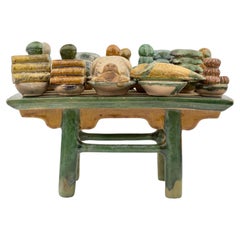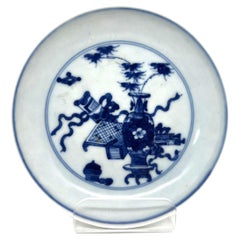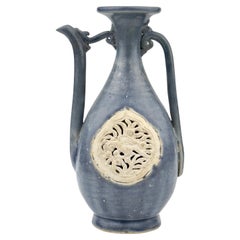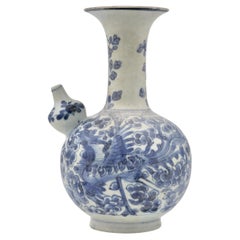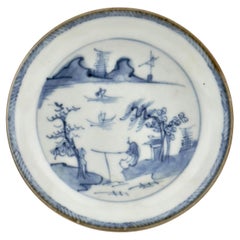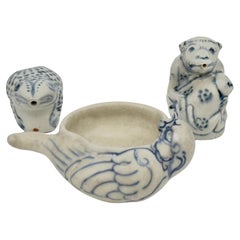South Korea - Asian Art and Furniture
15th Century and Earlier Hong Kong Ming Antique South Korea - Asian Art and Furniture
Pottery
1720s Vietnamese Qing Antique South Korea - Asian Art and Furniture
Ceramic
15th Century and Earlier Vietnamese Ming Antique South Korea - Asian Art and Furniture
Stoneware
1690s Vietnamese Qing Antique South Korea - Asian Art and Furniture
Ceramic
1720s Vietnamese Qing Antique South Korea - Asian Art and Furniture
Ceramic
15th Century and Earlier Vietnamese Antique South Korea - Asian Art and Furniture
Ceramic
15th Century and Earlier Vietnamese Ming Antique South Korea - Asian Art and Furniture
Stoneware
15th Century and Earlier Hong Kong Antique South Korea - Asian Art and Furniture
Celadon
18th Century East Asian Qing Antique South Korea - Asian Art and Furniture
Ceramic
15th Century and Earlier East Asian Ming Antique South Korea - Asian Art and Furniture
Bronze, Enamel
15th Century and Earlier Hong Kong Han Antique South Korea - Asian Art and Furniture
Stoneware
15th Century and Earlier Hong Kong Antique South Korea - Asian Art and Furniture
Celadon
15th Century and Earlier Hong Kong Tang Antique South Korea - Asian Art and Furniture
Earthenware, Pottery
19th Century Hong Kong Qing Antique South Korea - Asian Art and Furniture
Ceramic, Porcelain
1690s Vietnamese Qing Antique South Korea - Asian Art and Furniture
Ceramic
15th Century and Earlier Vietnamese Antique South Korea - Asian Art and Furniture
Stoneware
15th Century and Earlier Hong Kong Han Antique South Korea - Asian Art and Furniture
Stone, Limestone
15th Century and Earlier Chinese Ming Antique South Korea - Asian Art and Furniture
Ceramic, Stoneware
19th Century Korean Antique South Korea - Asian Art and Furniture
Fabric
1720s Vietnamese Qing Antique South Korea - Asian Art and Furniture
Ceramic
1720s Vietnamese Qing Antique South Korea - Asian Art and Furniture
Ceramic, Porcelain
1820s Indonesian Qing Antique South Korea - Asian Art and Furniture
Ceramic
15th Century and Earlier Vietnamese Antique South Korea - Asian Art and Furniture
Stoneware
1690s Vietnamese Qing Antique South Korea - Asian Art and Furniture
Ceramic
15th Century and Earlier Vietnamese Antique South Korea - Asian Art and Furniture
Stoneware
15th Century and Earlier Hong Kong Ming Antique South Korea - Asian Art and Furniture
Celadon
1720s Vietnamese Qing Antique South Korea - Asian Art and Furniture
Earthenware
15th Century and Earlier Hong Kong Antique South Korea - Asian Art and Furniture
Ceramic, Porcelain
1720s Vietnamese Qing Antique South Korea - Asian Art and Furniture
Ceramic
15th Century and Earlier Hong Kong Han Antique South Korea - Asian Art and Furniture
Limestone
15th Century and Earlier Vietnamese Antique South Korea - Asian Art and Furniture
Stoneware
15th Century and Earlier Vietnamese Ming Antique South Korea - Asian Art and Furniture
Stoneware
15th Century and Earlier Hong Kong Tang Antique South Korea - Asian Art and Furniture
Pottery
15th Century and Earlier Vietnamese Antique South Korea - Asian Art and Furniture
Stoneware
1690s Vietnamese Qing Antique South Korea - Asian Art and Furniture
Ceramic
1720s Vietnamese Qing Antique South Korea - Asian Art and Furniture
Ceramic
1720s Vietnamese Qing Antique South Korea - Asian Art and Furniture
Ceramic, Porcelain
1720s Vietnamese Qing Antique South Korea - Asian Art and Furniture
Ceramic, Porcelain
18th Century Vietnamese Qing Antique South Korea - Asian Art and Furniture
Ceramic
16th Century Vietnamese Ming Antique South Korea - Asian Art and Furniture
Ceramic, Porcelain
1720s Vietnamese Qing Antique South Korea - Asian Art and Furniture
Ceramic, Porcelain
17th Century Vietnamese Antique South Korea - Asian Art and Furniture
Ceramic
15th Century and Earlier Hong Kong Han Antique South Korea - Asian Art and Furniture
Pottery
15th Century and Earlier Hong Kong Antique South Korea - Asian Art and Furniture
Ceramic
1720s Vietnamese Chinoiserie Antique South Korea - Asian Art and Furniture
Ceramic
Late 17th Century Vietnamese Qing Antique South Korea - Asian Art and Furniture
Ceramic, Porcelain
15th Century and Earlier Hong Kong Antique South Korea - Asian Art and Furniture
Pottery
15th Century and Earlier Hong Kong Antique South Korea - Asian Art and Furniture
Pottery, Stoneware
1690s Vietnamese Qing Antique South Korea - Asian Art and Furniture
Ceramic, Porcelain
15th Century and Earlier Chinese Han Antique South Korea - Asian Art and Furniture
Celadon
15th Century and Earlier Hong Kong Tang Antique South Korea - Asian Art and Furniture
Stoneware
15th Century and Earlier Vietnamese Ming Antique South Korea - Asian Art and Furniture
Stoneware
16th Century Vietnamese Ming Antique South Korea - Asian Art and Furniture
Ceramic, Pottery
15th Century and Earlier Hong Kong Chinoiserie Antique South Korea - Asian Art and Furniture
Stoneware
15th Century and Earlier Hong Kong Chinese Export Antique South Korea - Asian Art and Furniture
Celadon
20th Century Hong Kong Qing South Korea - Asian Art and Furniture
Ceramic, Porcelain
15th Century and Earlier Hong Kong Antique South Korea - Asian Art and Furniture
Pottery
2010s Korean Modern South Korea - Asian Art and Furniture
Polystyrene
1690s Vietnamese Qing Antique South Korea - Asian Art and Furniture
Ceramic
15th Century and Earlier Vietnamese Antique South Korea - Asian Art and Furniture
Stoneware
Read More
Symbols of Happiness and Rebirth Adorn This Japanese Satsuma Bowl
Decorated with white cranes and the sought-after thousand-butterflies motif, the Meiji-period vessel offers both a celebration of traditional aesthetics and a clear reflection of the era’s appetite for exquisite export pieces.
Chicago’s Pagoda Red Has a Spirited Mix of Asian Antiques and Bold New Art
For 25 years, gallerist Betsy Nathan has leveraged her keen eye and key connections to bring a unique selection of rare finds to the market.
In L.A., Gallerist JF Chen Has Long Championed Eclectic Blue-Chip Design
Now working alongside his daughter Bianca, dealer Joel Chen has presented a most covetable array of antiques, art and contemporary creations for more than 40 years.
12 Calming Spaces Inspired by Japanese Design
From cherry-blossom-adorned walls paired with glamorous lighting to wood-paneled ceilings above checkerboard-patterned chairs, these 12 spaces seamlessly blend Eastern and Western aesthetics.
Rodrigo Rivero Lake’s Mexico City Showroom Is a Museum-Worthy Trove of Spanish Colonial and Asian Antiques
The dealer and curator has spent the past 50 years amassing a collection of exceptional art, furniture and architectural elements that trace the cultural influence of the Spanish empire from Europe to the Americas and beyond.
16 Refined Asian-Inspired Interiors
These spaces exemplify how Eastern elements elevate a home's decor.
